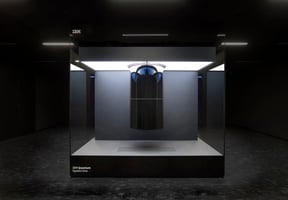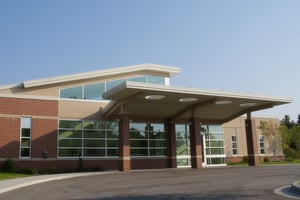The use of color in ambulatory healthcare environments plays a crucial role in creating a soothing...
9 Ways Retail Healthcare is Redefining Healthcare Delivery
Retail healthcare refers to medical services integrated into non-traditional settings, often within retail environments. This approach aims to make healthcare more accessible and convenient for consumers by bringing services closer to where people live, work, and shop. Retail healthcare services are typically offered in locations such as pharmacies, grocery stores, retail strips, shopping malls, and lifestyle centers. Here are 9 ways that retail healthcare is changing the delivery of medical care.
-
Convenience: Retail healthcare is designed to be convenient for consumers, allowing them to access basic healthcare services often without the need for an appointment or a visit to a traditional medical facility. This is especially helpful for busy families or people who live in areas with limited healthcare access.
-
Expanded Access: By placing healthcare services in retail settings, individuals may have greater access to services in their local communities, particularly in underserved areas. This can help to reduce healthcare disparities and improve overall population health.
-
Preventive and Primary Care: Retail healthcare services often focus on preventive and primary care, providing services such as flu shots, vaccinations, basic health screenings, and wellness checks. This can help to catch health problems early and prevent them from becoming more serious.
-
Ambulatory Care Facilities: In recent years, there has been a growing trend of incorporating ambulatory care facilities, such as urgent care centers, imaging centers, and even surgery centers into retail settings. This allows for the provision of a wider range of healthcare services in convenient locations.
-
Specialty Care: Many retail healthcare settings are beginning to offer specialty care services, such as dermatology, cardiology, kidney care, and mental health. This can provide patients with even greater options for convenient and accessible care.
-
Lower Costs: Retail healthcare can often be less expensive than traditional healthcare settings, due to lower overhead costs and the ability to offer more efficient services. This can make healthcare more affordable for consumers and help to reduce overall healthcare costs.
-
Improved Patient Satisfaction: Studies have shown that patients are generally satisfied with the convenience, accessibility, and quality of care provided in retail health settings.
-
Changes in Healthcare Workforce: The growth of retail healthcare is creating new opportunities for healthcare professionals, such as nurse practitioners and physician assistants. It is also changing the way that traditional healthcare providers, such as doctors and nurses, deliver care.
-
The Future of Healthcare: Retail healthcare is still in its early stages, but it is already revolutionizing the way that healthcare is delivered. As technology continues to evolve and consumer demand for convenient care grows, we can expect to see even more retail healthcare options emerge in the future.
Hardaway|Sziabowski designs ambulatory healthcare facilities in retail, commercial, and a variety of other settings. We are committed to advancing the design and quality of care delivered in these contexts. Visit our website for examples of these exciting projects: https://www.hsarchitecture.com/work-other-medical



